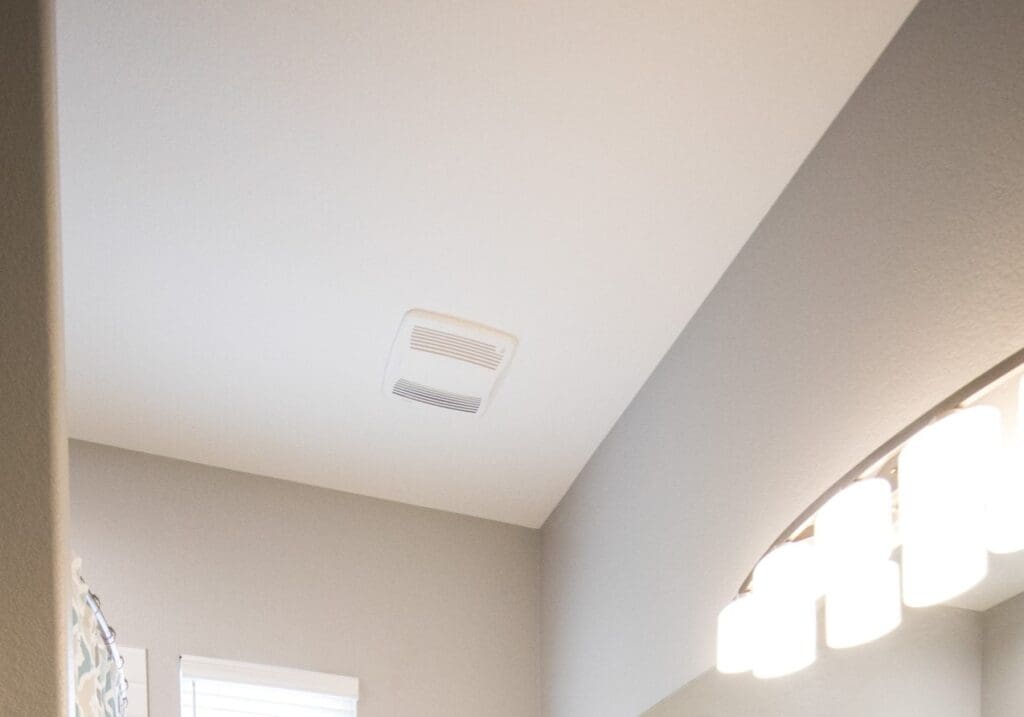
Published on April 29, 2019
Whether it’s new construction or a remodel, a bathroom vent should always vent through the roof instead of an eave, overhang, or soffit. The point of a bathroom exhaust vent, or any vent really, is to remove hot, moist air from the house. And while both a roof vent and an overhang vent perform this task, there is one big difference.
As the warm moist air leaves the bathroom through a soffit, it leaves in a downward motion. However, natural air flow from the outside will bring the moist air back into the attic through the soffit vents, kind of like a vacuum.
Now there is all of this warm, moist air hanging out in the attic. This is where having a well-sealed and insulated attic can hurt you. The moisture in the air has nowhere to go and settles on the insulation, rafters, and other parts of the attic.
Over time, this can lead to mold, mildew, and other damage to the roof structure. This can be mitigated by roof vents or even an attic fan. But if you don’t have any of that already in place, that’s an unexpected cost. Unfortunately, when the damage is discovered, it’s too late to take these steps.
Other examples
In some cases, the hot air can’t be run through the roof, like in the case of a dryer. Dryers are usually found in the basement or main floor of the house. That would make quite a run for the exhaust – and lint – to make.
Dryer exhaust should never run much more than 10 feet as a safety factor. Lint and other debris just can’t make a much longer journey, will be caught in the exhaust hose, and cause a fire hazard or affect the performance of the dryer.
At any rate, these vents are usually found in the side of the house, lessening the chance of cooler air entering the system and there isn’t the natural vacuum effect like there is in the attic. That’s why it’s fine to have bathroom vents in a basement or lower floors to leave through the side of the home.
To help your attic stay clear of mold or mildew, make sure all exhaust fans running through the attic leave through the roof. For one, you’ll lessen the chance of the warm air getting back into the attic. And a straight shot is more efficient than turning back down through a soffit.
Is your attic as dry as it should be? Do you need to have a bathroom vent, or any other vent, re-routed from a soffit to the roof? Would a few more vents help your situation? Give Warner Roofing a call. We can evaluate your attic and make recommendations for venting to keep the area safer from mold and mildew.
Warner Roofing has been providing Vancouver roofing services since 1992, know the industry, and are experts in the field. We provide professional experience throughout the process and work efficiently and safely. If you have a question about roof vents, or any other roofing services we provide, give us a call today.